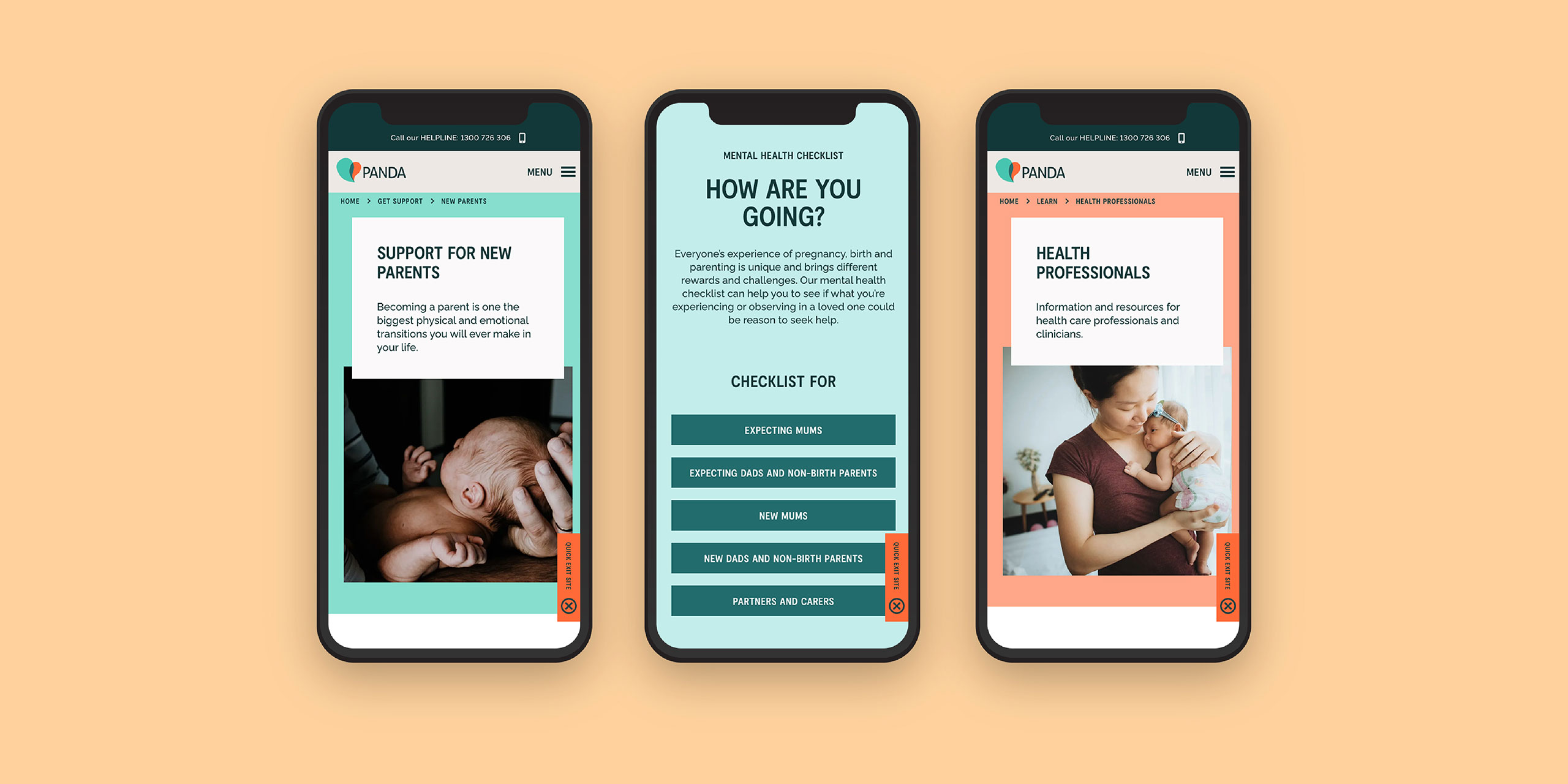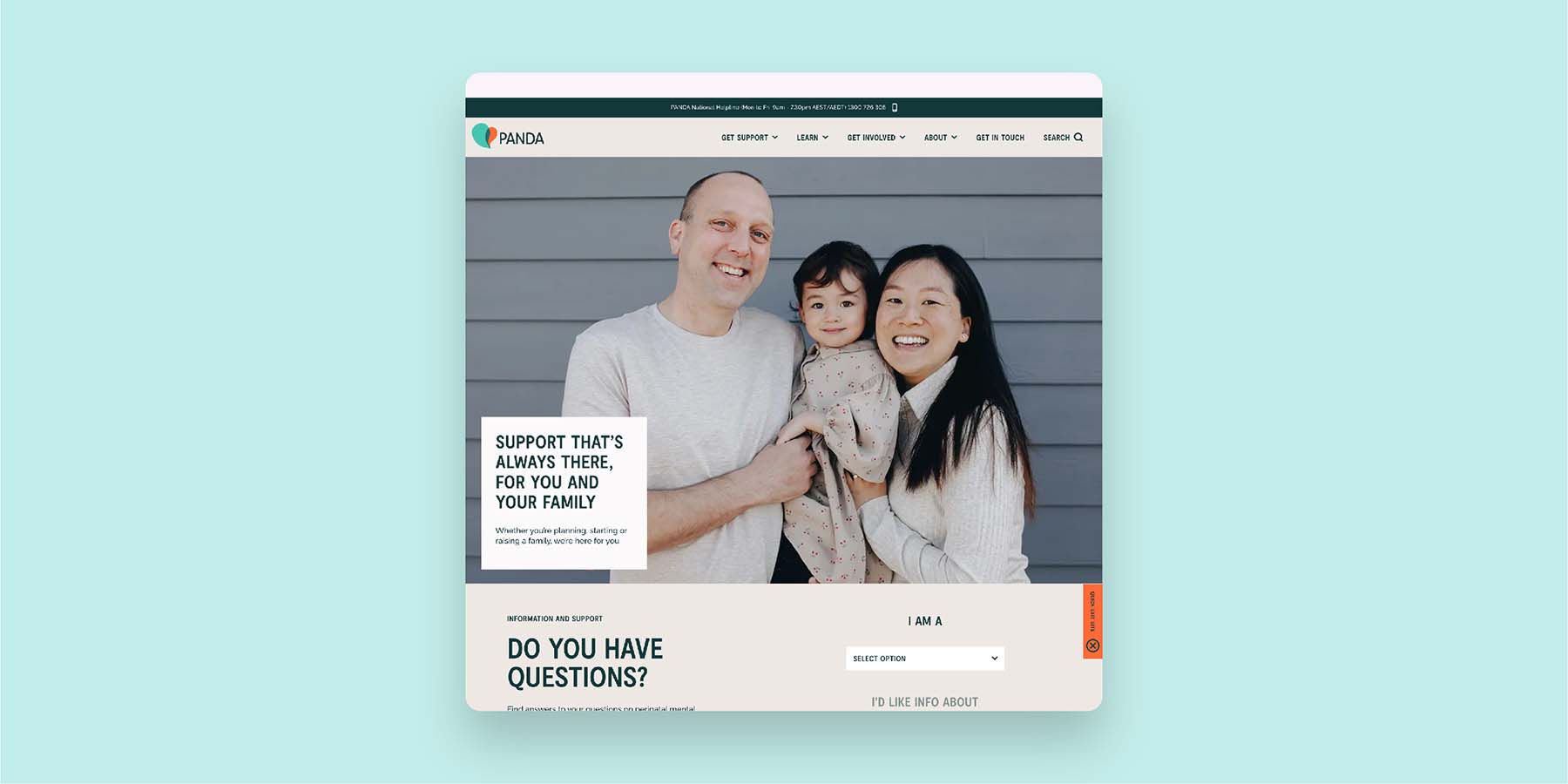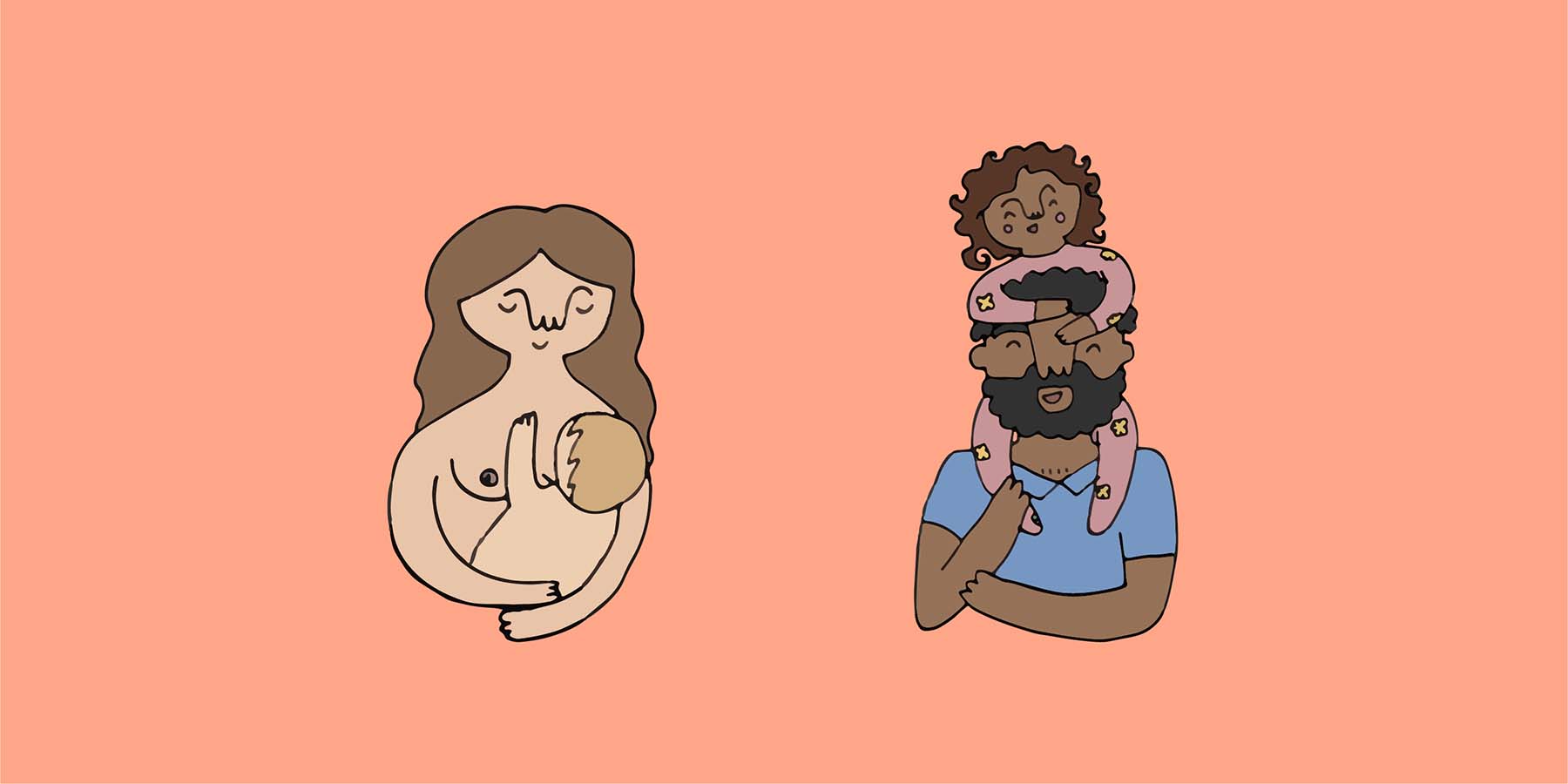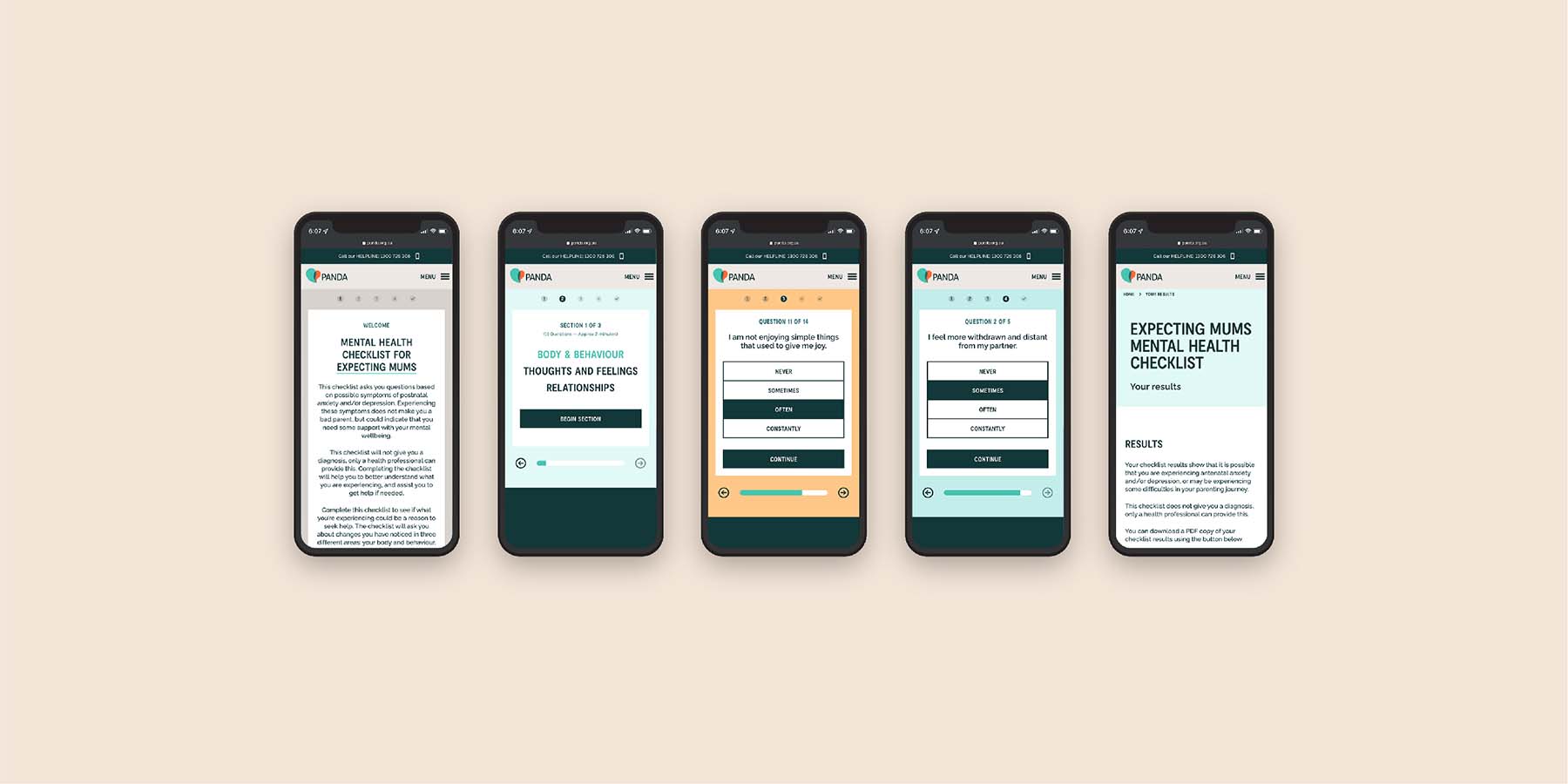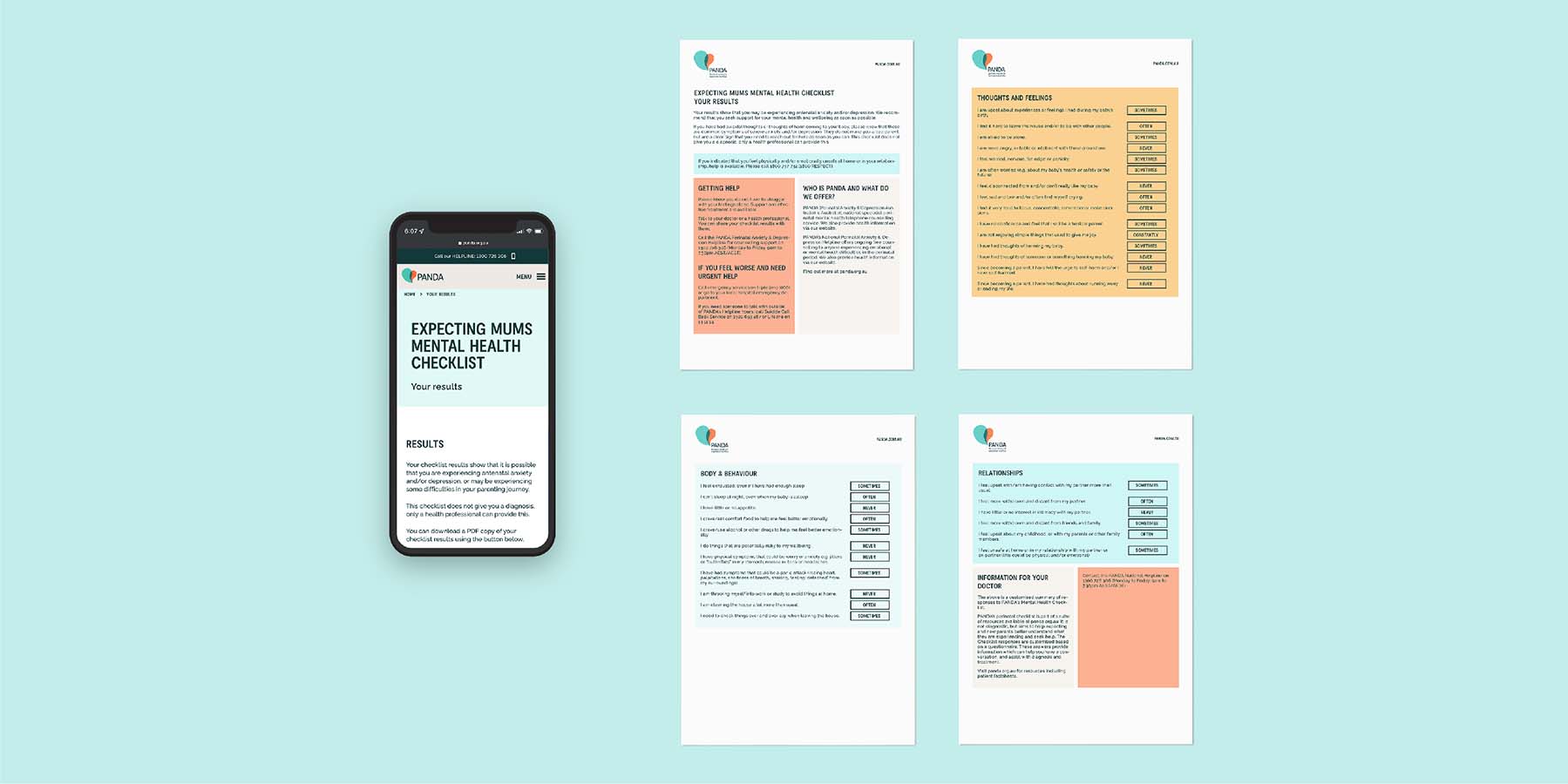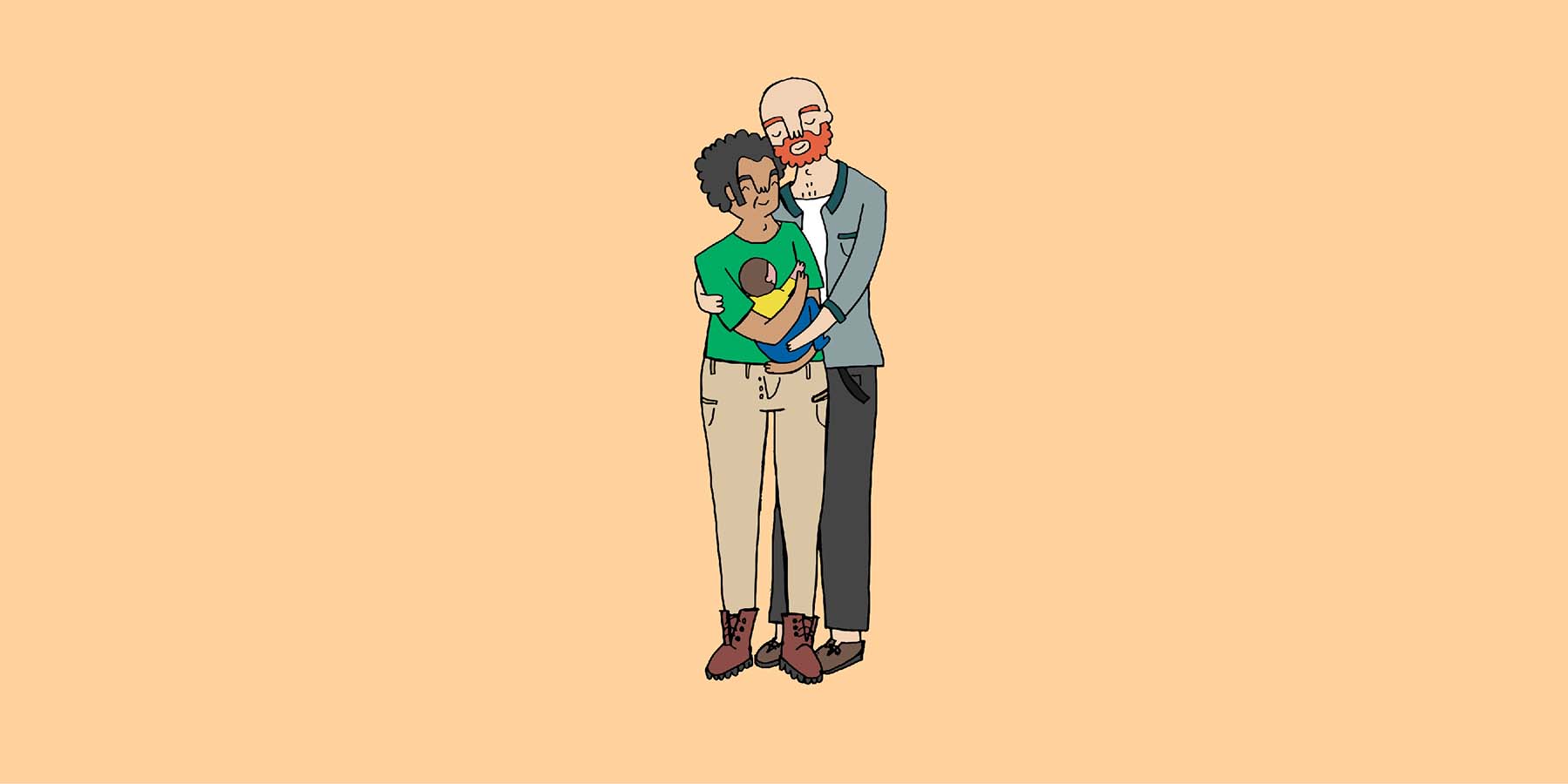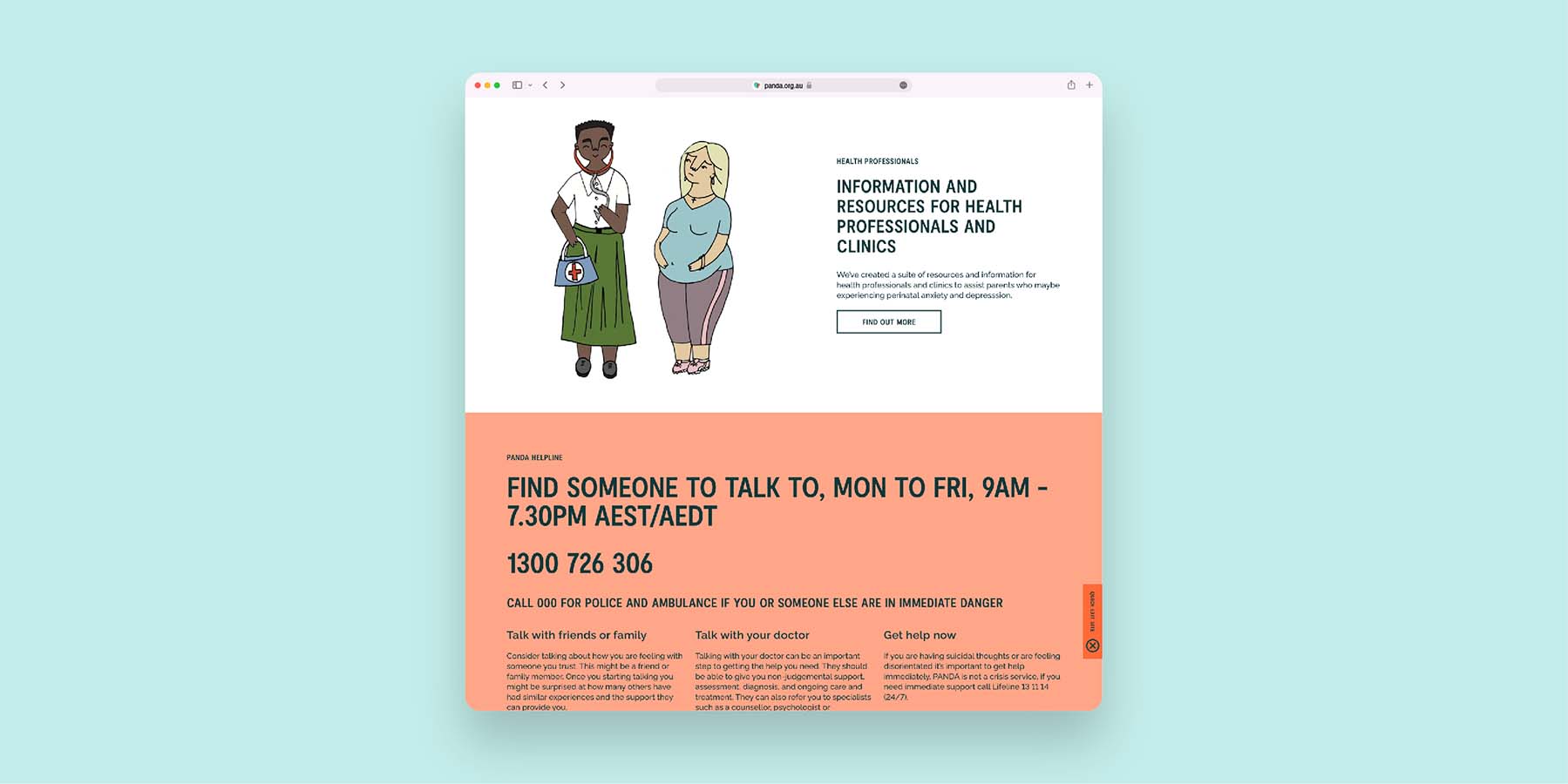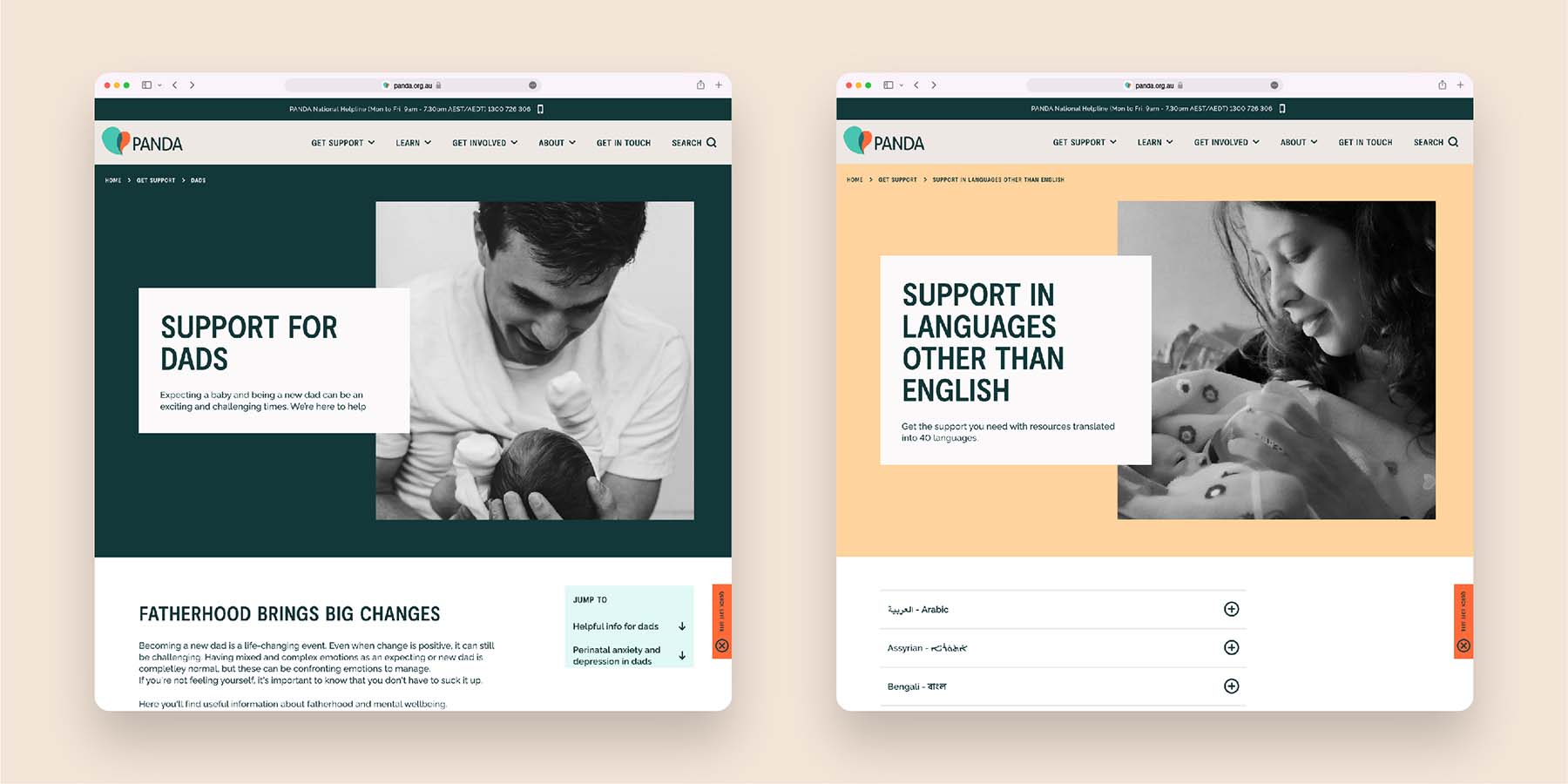We utilised a collaborative service design approach to reimagine new pathways for parents to seek help online in addition to the helpline. This included an entire redesign of the PANDA website and digital experience. We adopted a human-centred design approach that took in user research, iterative user experience design and multiple rounds of interactive audience testing.
Through this process we developed and designed a new website that reorganised all information around parental segments and the symptoms they are experiencing as pathways for exploring content, resources, services and seeking help. It quickly became apparent that the existing brand identity was an obstacle to achieving the desired goals and outcomes for parents.
The organisation had an existing logo that needed to be retained, but the rest of the brand identity needed to be refreshed to deliver the type of experience needed for users. A refreshed brand identity was prototyped through the design and development of the new website. The new identity was driven by two guiding principles: to invite harmony and diffuse anxiety and increase accessibility and inclusivity.
All design elements including typefaces and colour choices were selected to achieve this outcome. The website has successfully achieved globally recognised accessible design WCAG 2.1 & ADA compliance. This new brand identity was created hand-in-hand with the digital design system to create a seamless experience across the site and continues to be rolled out across the organisation offline. The digital design system has been built to foster a shared language which is consistent, predictable, learnable and ultimately engaging to as broad cross-section of the community as possible.

